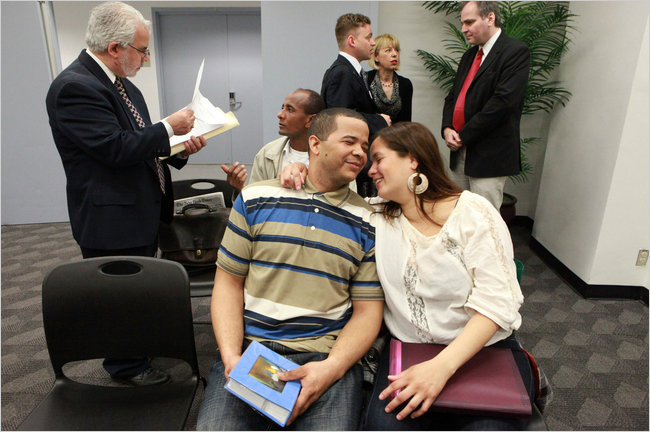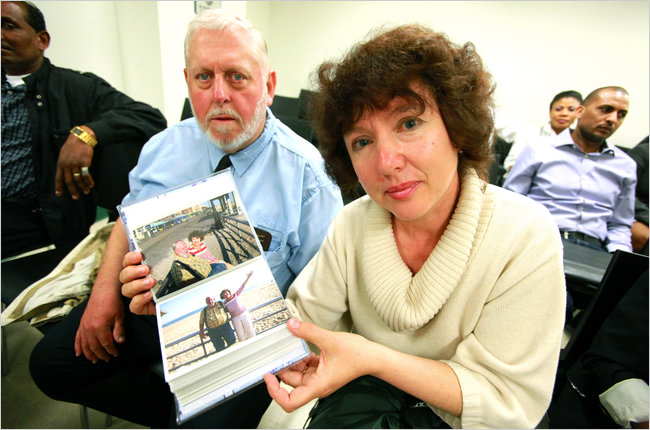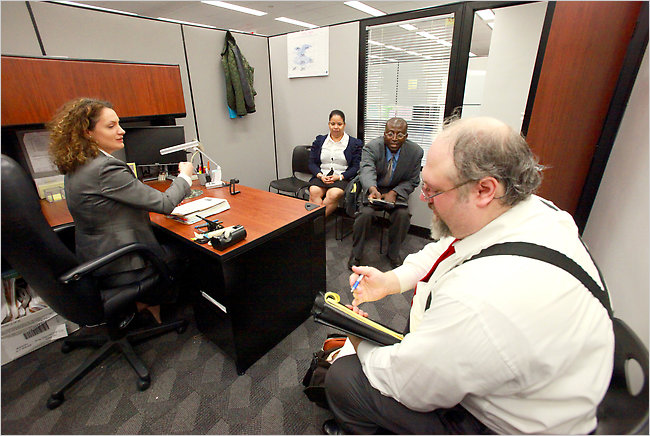| Want to send this page or a link to a friend? Click on mail at the top of this window. |
More Special Reports |
| A SPECIAL SECTION: Haiti since the January 12, 2010 Earthquake |
| Posted June 15, 2010 |
| National |
|
Do You Take This Immigrant? |
|
|
|
|
PHOTOGRAPHS BY SUZANNE DICHILLO/THE NEW YORK TIMES |
|
| An immigration office where people were having their marriages scrutinized. | |
|
By NINA BERNSTEIN |
 |
| Marriage Quiz |
 |
| RAMON EMILIO DIAZ & MIGUELINA MONTALVO DIAZ She: "If we get approved, I will go to meet his kids." |
 |
| LARRY & CHISTIANSEN He: "When she smiles, it's real." |
 |
| Barbara Felska, an immigration officer, with a video recorder on her desk, meets with one couple, Sally Bines and Yusuf Mohammed, and their lawyer, Daniel Lundy. |
| Wehaitians.com, the scholarly journal of democracy and human rights |
| More from wehaitians.com |